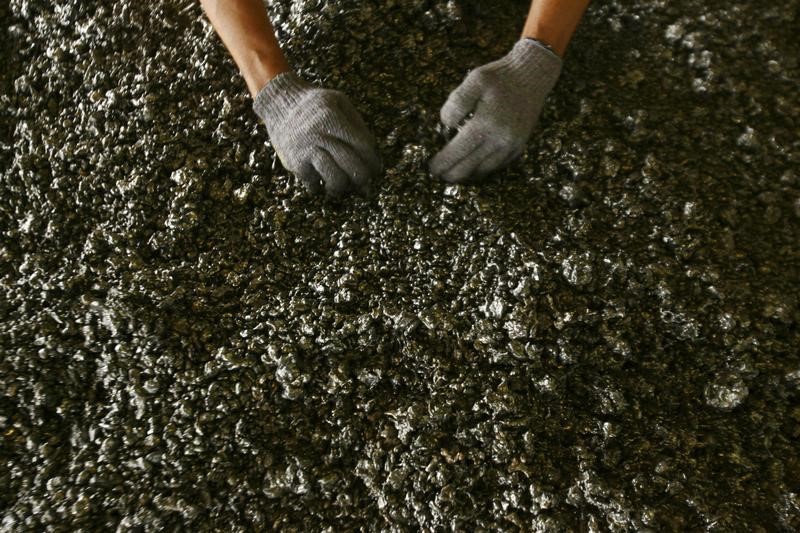By Sarah Marsh
MOA, Cuba, June 13 (Reuters) - Cuba is trying to reduce
costs in the nickel industry to offset losses from low global
prices, rather than raising output from 56,000 tonnes annually,
industry executives said on a rare tour of one of the
communist-led island's plants.
The head of state monopoly Cubaniquel and plant managers
said that despite the slump they were looking to foreign
investment to increase capacity in the future.
Nickel is one of the top foreign exchange earners for Cuba's
beleaguered economy, and the country averaged production of
around 74,000 tonnes in the decade after 2000. But nickel export
earnings have been hit by plant obsolescence and a sharp fall in
prices for the metal over the last four years.
Cubaniquel originally expected revenue of $600 million to
$700 million from nickel this year, projecting prices at around
$14,000 per tonne, director Eder Oliveros Garcell said. Instead,
prices have hovered around $8,600 per tonne, meaning sales will
be substantially lower.
"We expected revenue of this order, but the reality today is
different," Oliveros Garcell said, during a visit late last week
to the Pedro Soto Alba plant in the eastern Cuban city of Moa, a
joint venture between Cubaniquel and Canadian mining company
Sherritt International Corp S.TO .
PRICE RISE SEEN
Oliveros Garcell said he expected prices for nickel, used in
the production of stainless steel and other corrosion-resistant
alloys, to rise again next year. Cuba is one of the world's
largest producers and exports to China, Europe and Canada.
Output at the Pedro Soto Alba plant will continue to run at
full capacity, producing 37,500 tonnes per year. If it continues
to run at the same pace, it has enough reserves to last another
18 to 20 years, the plant's production manager Ricardo Quintana
Santana said.
But Cuba's only other processing facility, the state-owned
Che Guevara plant, also in the northeastern district of Moa, was
operating well below its capacity of 30,000 tonnes per year,
said Cubaniquel's Oliveros Garcell. Output would likely be
18,500 tonnes this year, rising to 19,000 tonnes in 2017, he
said.
Low prices are exacerbating the impact of low output on
financial results.
"The topic of prices this year is having a significant
impact in the plant's results and we have to improve on costs to
get better results," he added.
The industry was seeking to reduce energy and metallurgical
costs, Santana said. Yet it wanted to raise salaries in line
with recent reforms under President Raul Castro designed to
update Cuba's Soviet-style command economy.
The average Cuban state monthly wage is around $25, not
enough to live on despite free housing, food rations and free
healthcare and education.
"The salary we had last year has multiplied by around four,"
said Santana, adding that wages were now around 3,000 Cuban
pesos monthly, equivalent to $125. Motivation had risen as a
result, he said.
Despite the slump in prices, Cuba was looking for a partner
for other projects in the nickel industry, Oliveros Garcell
said, and had interest from companies in China, Brazil and South
Africa.
Exploration in and around Moa has shown reserves could
support 120 years of mining at the country's current rate of
production
Both Oliveros Garcell and Santana said they hoped U.S.
sanctions on Cuba would be lifted so the nickel industry could
export there and import spare parts from its nearby northern
neighbor rather than from Europe.
(Editing by Cynthia Osterman)
